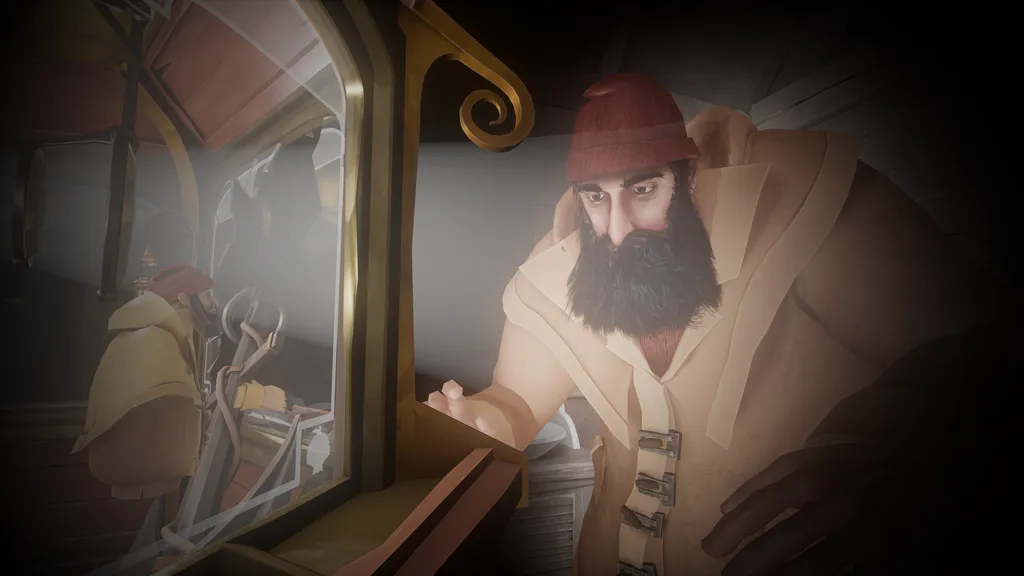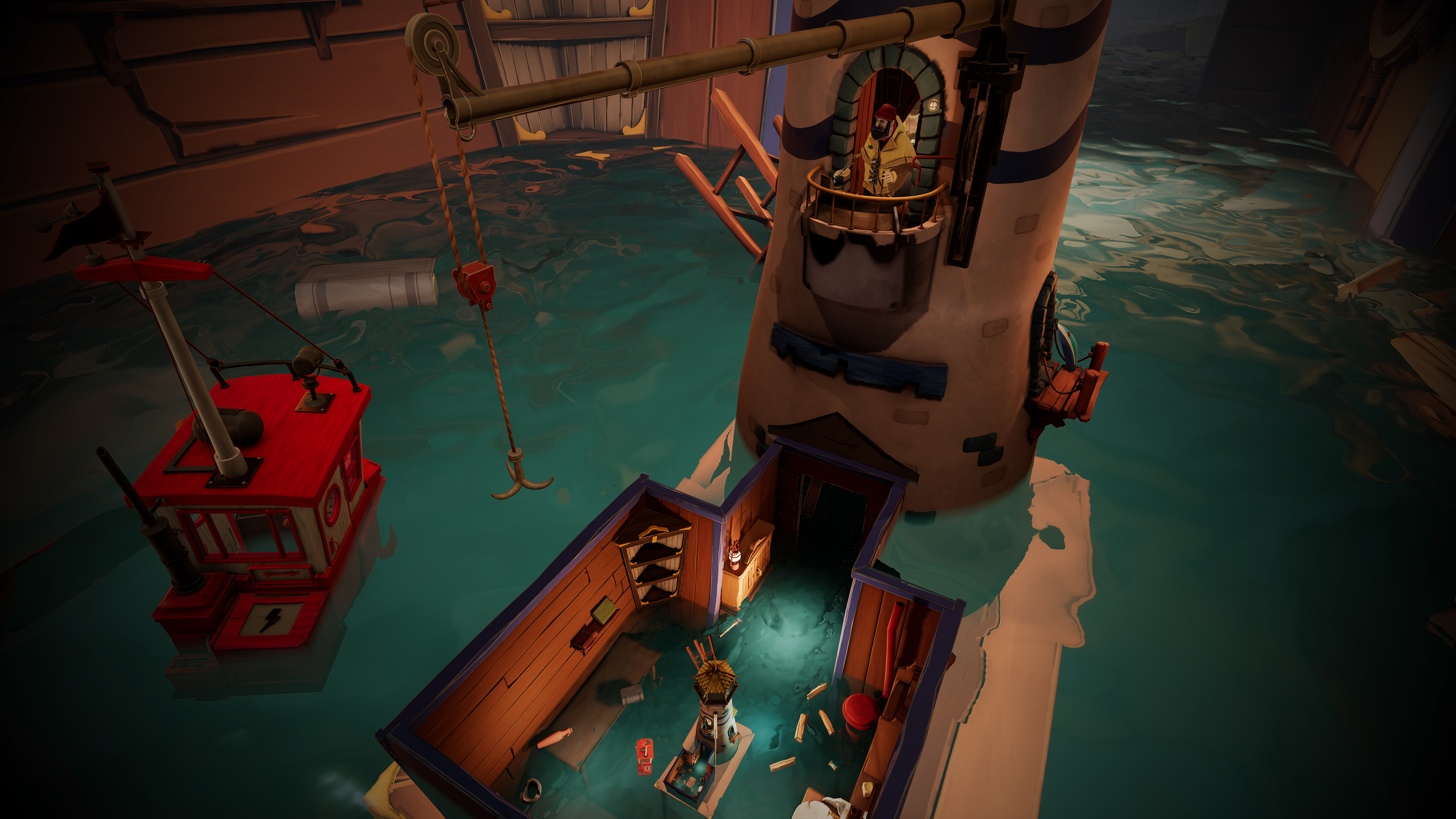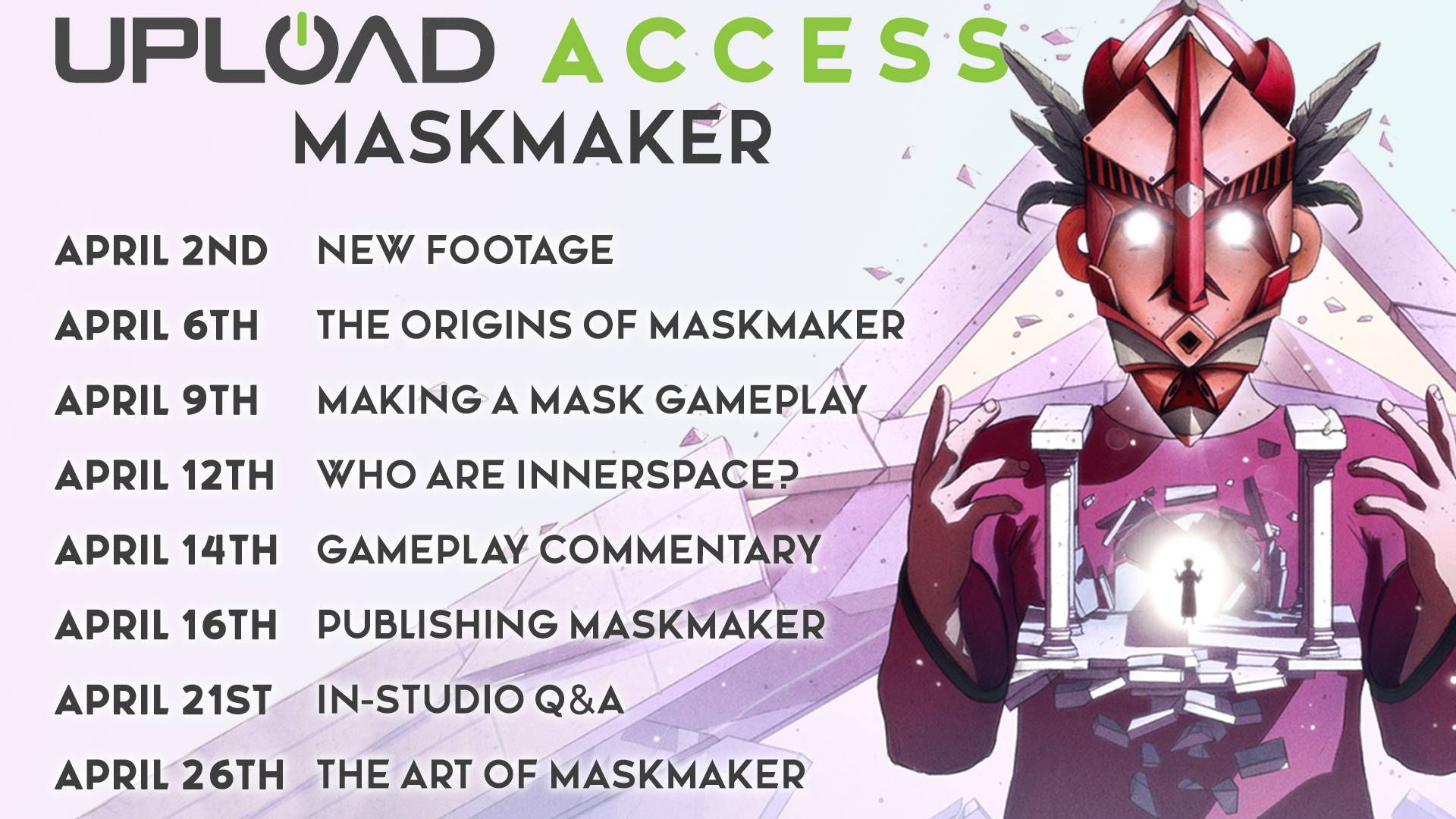Innerspace VR gets it.
Whether it’s the intimate theatre of its Firebird series or the unforgettable assault on reality that is A Fisherman’s Tale, the studio is in constant search of invigorating new ideas for VR games and experiences. In this respect, the Paris-based team feels ahead of the pack. But, in fairness, it had a bit of a head start.
Normally, when I ask someone what their first VR experience is, I already know the answer. For many it was the Oculus Rift DK1 or, more recently, maybe the Quest or PlayStation VR. Innerspace co-founder and creative director Balthazar Auxietre’s first experience is a fair bit older than that, though.
In 2010, Auxietre was attending a different kind of film school. Rather than lectures and camera loans, he was given a year to produce an innovative project, one that looked beyond the framing of traditional cinema. He chose to focus on something quite unknown at the time – VR technology.
“I was super interested in how videogames could tell stories,” Auxietre tells me over a call. “And how videogame technology could be applied to create different kinds of movies and obviously [make it] more interactive and engaging.”
VR Before Oculus
For his project, Auxietre didn’t want to create a game so much as a game world, one that emulated our reality but brought users closer to the experience. “My project started with the idea of creating an intimacy between the user and the story,” he says. “Instead of making a movie when you sit down in the screen and have plenty of people around you, you are alone in front of the screen. And the only way to do that, really, was with a VR headset.”
So Auxietre searched for the lowest-cost headset at a time when Palmer Luckey was only beginning to envision the Oculus Rift, and Sony was still taping Move controllers to employee’s heads as a means of head-tracking. He came across the Z-800 3D visor from eMagin. By today’s standards, it was a pretty primitive offering; 800×600 per eye resolution and a 40 degree field of view, not exactly what you’d call premium VR.
But, for what Auxietre wanted, it was more than enough. “Even with this pretty crappy technology, the promise of VR was pretty incredible already,” he says, “And I was really swept into this new realm as soon as I tried new stuff. I felt like I was discovering new territory.”
An Industry Is Born
People that saw his piece agreed, and their reaction gave Auxietre the fuel to keep digging. He got involved with a French enthusiast group named VR Geeks, where he found out about the Oculus Rift DK1. As soon as he got the developer kit, he started experimenting with different ideas and also got to show Oculus itself his early work.
“They were quite excited by it because, even if they were in to making games, the storytelling stuff was quite new to them, and we were one of the first to show them an advanced work in this field,” Auxietre explains. This, in turn, led to the Auxietre and his colleague’s first full VR projects for the Samsung Gear VR, which was made in partnership with Oculus.
These took the form of experimental 360 degree films. One of was The Fifth Sleep, a VR movie inspired by The Fantastic Voyage that’s still viewable on Gear VR. In the piece, viewers enter the mind of a character in a coma, playing on both biological and fantastical aspects. From there, Auxietre and partner Hayoun Kwon — at the time both working out of South Korea — decided to make it official. Innerspace VR was born.
For its next, more ambitious projects, the team turned to the HTC Vive. This, finally, was a headset approaching the real potential of VR, with full room-scale tracking and hand controllers. But Innerspace was still a young team that didn’t have the knowledge or resources for game development that other VR creators did. Its first piece would need to be something within its relative comfort zone whilst sowing the seeds for something more ambitious down the line.
Looking back, Firebird: La Peri, a Fantasia-inspired performance, fit that bill quite nicely. It was limited in interactivity compared to other content releasing alongside the Vive in 2016, but its take on immersive ballet, in which the user wasn’t simply looking on from the audience but instead rooted right in the center of the performance, felt like a powerful expression of the platform’s new possibilities beyond gaming. But could non-gaming experiences work on hardware that was primarily marketed towards gamers?
The response was encouraging. “Something we discovered quite rapidly is that the VR audience is different from the gaming audience,” Auxietre said. There was an openness to new experiences that Innerspace hadn’t quite expected, and La Peri — if not one of the best-selling apps of VR’s launch — performed quite well. Well enough, in fact, for Innerspace to investigate the idea of a series. Could that work?
“In a way the response was no, not in the same way.”
Unfinished Business
Firebird: The Unfinished was a similarly excellent piece of work, pushing Innerspace further in terms of interactivity whilst retaining the core, hypnotic central performances. But its development was long and costly, and it didn’t release until two years after La Peri at a time when VR was doubling down on gaming content.
“People were getting used to VR and they wanted to do more stuff,” Auxietre says. “I think the storytelling side of things is its own debate and why it doesn’t really grasp the audience still today, I think it’s difficult. There are many reasons why it hasn’t worked but from my point of view it’s mostly because VR is a difficult medium to work with. It’s costly. So even making a 15 minute project costs [a lot] if you want to get something published. So getting a return on that is super difficult.”
This speaks to a problem many VR storytellers have encountered, releasing experiential apps on gaming storefronts with meagre runtimes that compete with similarly-priced, hours-long games. Auxietre hopes that, one day, VR will have a diverse and large enough audience to really help foster the scene, but it’s just not there yet. “We’ve moved forward, and I’m still optimistic. But I would say pure storytelling for VR is not ready for primetime.”
Firebird, then, remains unfinished business.
Fishing For More
If Innerspace was to survive, then, it had to adapt. “For us, the natural next step was going further into the interaction road,” Auxietre says, “Also because the further I understood VR, the further I realized at its core it’s an interactive medium. And even if you want to tell a story it needs to be fully engaging in many different ways, not only if you can choose the outcome.”
A Fisherman’s Tale was born from that thinking. Director Alexis Moroz had an early idea for playing with recursion — a means of working with a simplified version of a problem in order to solve a wider one — early on. “Instantly both our eyes lit and we started to imagine what a game could be based on this concept of being trapped inside a recursion.”
The idea, you might have seen, went pretty far. A Fisherman’s Tale has one of the most instantly-astonishing premises of any VR game, allowing players to interact with smaller and larger versions of themselves through a scale model in the center of their play environment. Pick up an item in the game world, hold it up and then you could reach down into the model to pick up a smaller version of it. Or poke your finger down into the diorama and you’ll see a gigantic version of it trying to prod at you.
For Auxietre building out a full game with over an hour’s worth of content was an exercise in moving out of comfort zones, but Moroz helped lead the charge on gameplay ideas. The actual puzzles for A Fisherman’s Tale — which include resizing keys, removing barriers that are giant in one world and tiny in another, or even travelling into the larger world with the help of a fish — were set in place quite quickly. It was the linking of these puzzles to the game’s thematic tone and narrative, which played on the role of fatherhood and succession, that proved difficult.
Innerspace navigated that stormy sea, though, and came out with something truly special. A Fisherman’s Tale was one of the first games to get a 5/5 score at UploadVR and it won best game at the 2019 VR Awards. Critical reception aside, Auxietre says the game has kept selling overtime, if not launching to massive sales.
“We were quite proud of having — it’s too early to say a cult classic — but I think the game is placed in the stuff you need to try at least to see what VR can bring as a medium,” he says.
For it’s next trick, Innerspace is taking more logical steps. It wants Maskmaker to be a bigger, longer game than A Fisherman’s Tale (which some said was too short) and something that keeps exploring ideas that are contingent upon VR itself. We also spoke with Auxietre about the game’s origins ahead of its release on PC VR and PSVR on April 20th.
Going beyond Maskmaker, though Innerspace seems ready to keep going. It might be too early for a return to more experiential content like Firebird, but the team is interested in exploring even bigger ideas than Maskmaker (though Auxietre jokes that its next title won’t be a giant open-world). The team isn’t likely to return to its purely storytelling-focused roots anytime soon but, in a way, that chapter seems better left in the past. Innerspace is one of VR’s most interesting developers precisely because its a team of artists and filmmakers taking increasingly promising steps into the world of gaming, and that’s reflected in a truly eclectic body of work.




























